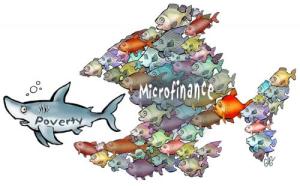Against the background of an increasing feminization of poverty in the developing world, microfinance programs represent important means for promoting women’s empowerment. However, most of these programs are only focussed on individual and purely economic empowerment but do not involve full and equal participation of women in all spheres of society. In order to improve the effectiveness of microfinance programs for women, it is necessary to integrate a societal and political dimension which enables women to participate in decision-making processes above and beyond the family context.
A report by Alexandra Dobra, published in the “International Politics and Society” journal of the Friedrich Ebert Foundation, depicts important limits of microfinance programs for women:
According to the Microcredit Summit 2005, women represent 70 percent of individuals living on less than 1 us dollar a day. Not only do women represent the major part of the poorest individuals, but in addition they are also the most vulnerable.
Microfinance programs have proven to be important instruments to fight against female poverty and vulnerability in developing countries. Among the 81.9 million poor clients served by microfinance programs in 2005, 84.2 percent were women (World Bank 2005). Microfinance, by targeting women, allows not only improvements in gender equality but also effective decreases in poverty through the positive effect of gender equality on development.
Image source: http://dgdwblog.wordpress.com
Using microfinance programs to give women access to financial
services is a means of mobilizing their productive capacities for the
benefit of economic development. Through access to financial resources,
microfinance not only gives women access to self-employment, but also
contributes to the amelioration of family life and influences the social
situation of women by promoting self-confidence and the capacity to
play an active role in society. Moreover, extrapolating from household
expenditure by working women it appears that women are more inclined to
be altruistic and spend most of their money on their families. In this
way, the wellbeing of the whole family and society is improved.Although the social dimension of microfinance enables the emergence of female empowerment, the latter is too underdeveloped. In most instances, microfinance programs only enhance personal empowerment but do not involve full and equal participation of women in all spheres of society, including decision-making and access to power. In most developing countries, women are for example still largely under-presented in politics.
In order to improve their effectiveness of the empowerment process, microfinance programs must try to enhance their contextual adaptation and the political dimension. Therefore, the preponderance of the economic dimension of microfinance has to be reduced. Policy intervention is needed especially when it comes to improve women’s societal status. Action plans should reinforce women’s rights by stepping up the fight against sexual discrimination, by accelerating the politicization of women and by tackling patriarchal norms. Hereby, increasing women’s education and wage income is an important milestone. By these means, microfinance programs can go beyond their current embryonic stage of development and promote a “mentoring” function for women with a stronger focus on long term outputs.


No comments:
Post a Comment